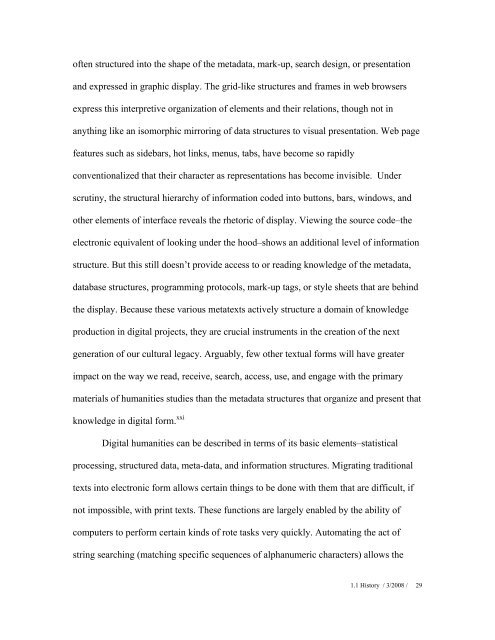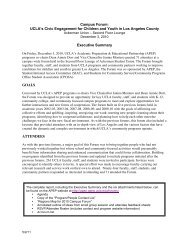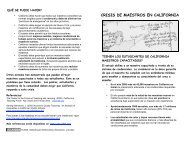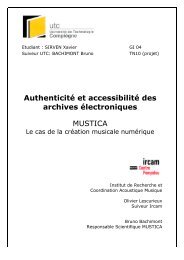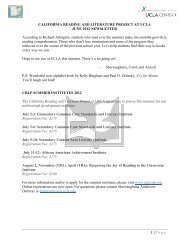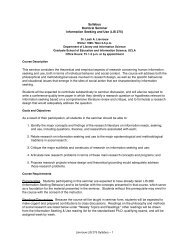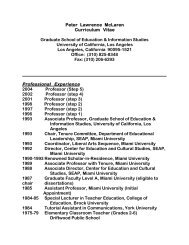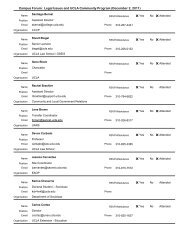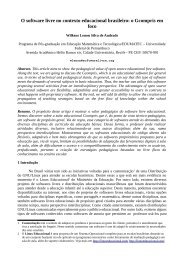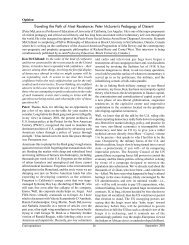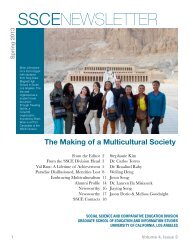1.1 From Digital Humanities to Speculative Computing - UCLA ...
1.1 From Digital Humanities to Speculative Computing - UCLA ...
1.1 From Digital Humanities to Speculative Computing - UCLA ...
Create successful ePaper yourself
Turn your PDF publications into a flip-book with our unique Google optimized e-Paper software.
often structured in<strong>to</strong> the shape of the metadata, mark-up, search design, or presentation<br />
and expressed in graphic display. The grid-like structures and frames in web browsers<br />
express this interpretive organization of elements and their relations, though not in<br />
anything like an isomorphic mirroring of data structures <strong>to</strong> visual presentation. Web page<br />
features such as sidebars, hot links, menus, tabs, have become so rapidly<br />
conventionalized that their character as representations has become invisible. Under<br />
scrutiny, the structural hierarchy of information coded in<strong>to</strong> but<strong>to</strong>ns, bars, windows, and<br />
other elements of interface reveals the rhe<strong>to</strong>ric of display. Viewing the source code–the<br />
electronic equivalent of looking under the hood–shows an additional level of information<br />
structure. But this still doesn’t provide access <strong>to</strong> or reading knowledge of the metadata,<br />
database structures, programming pro<strong>to</strong>cols, mark-up tags, or style sheets that are behind<br />
the display. Because these various metatexts actively structure a domain of knowledge<br />
production in digital projects, they are crucial instruments in the creation of the next<br />
generation of our cultural legacy. Arguably, few other textual forms will have greater<br />
impact on the way we read, receive, search, access, use, and engage with the primary<br />
materials of humanities studies than the metadata structures that organize and present that<br />
knowledge in digital form. xxi<br />
<strong>Digital</strong> humanities can be described in terms of its basic elements–statistical<br />
processing, structured data, meta-data, and information structures. Migrating traditional<br />
texts in<strong>to</strong> electronic form allows certain things <strong>to</strong> be done with them that are difficult, if<br />
not impossible, with print texts. These functions are largely enabled by the ability of<br />
computers <strong>to</strong> perform certain kinds of rote tasks very quickly. Au<strong>to</strong>mating the act of<br />
string searching (matching specific sequences of alphanumeric characters) allows the<br />
<strong>1.1</strong> His<strong>to</strong>ry / 3/2008 /<br />
29


